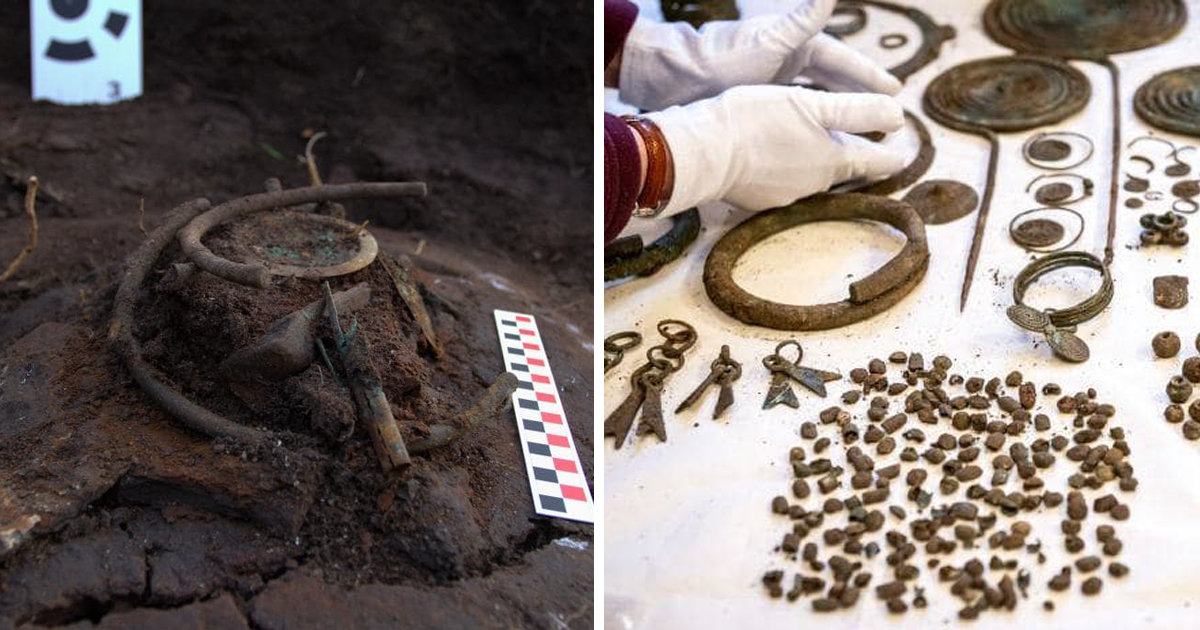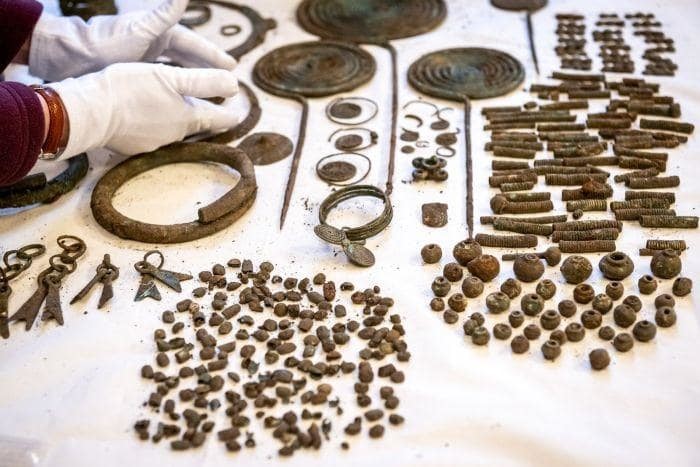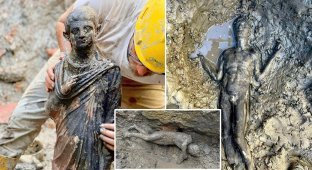Ancient human remains and dozens of bronze jewelry found in a peat bog in Poland (5 photos)
Polish archaeologists reported a find near the city of Chełmno, Kuyavia-Pomeranian Voivodeship. Among the dozens of bronze ornaments were necklaces, bracelets, greaves, decorative pins. However, the presence human bones next to 2500-year-old jewelry indicates that that these objects were most likely used in sacrifices. 
The discovery was made by members of the Kuyavia-Pomeranian group of explorers history (Kujawsko-Pomorskiej Grupy Poszukiwaczy Historii), who conducted searches with metal detectors. Once they realized that the metal detectors stumbled upon something really valuable, excavations began under leadership of Wojciech Sosnowski from the Voivodeship Protection Department monuments in Torun. They were attended by researchers from the Institute archeology of the Nicolaus Copernicus University in Toruń and landscape Vdetsky park. 
During excavations in the ground, many ancient artifacts. Scientists have discovered three deposits filled with whole or damaged ornaments and bronze items used most likely for ceremonial purposes. Among the finds were necklaces, bracelets, greaves, horse harness and pins with spiral heads.
Among the finds of archaeologists, organic raw materials were especially admired, such as fragments of ropes and textiles from horn tools framed in bronze sheets, because to find organic raw materials that are well preserved in such wet conditions are a rarity. 
Most of the artifacts, according to researchers, should be associated with representatives of the Lusatian culture.
Lusatian culture was widespread in the Bronze Age and Early Iron Age (12th–4th centuries BC) in the basins of the Oder and Vistula rivers and extended east to the Bug River. The name comes from the Serbian Lusatia (Lausitz) region, now located in eastern Germany, where cultural monuments were discovered and studied for the first time. Some items, however, are not indigenous to this region and are correlated with the Scythian civilization and its influence from the region of modern Ukraine. 
Among dozens of other artifacts, scientists have found human bones, which supports the theory that this was a place for sacrifices.
The research team explained that it was a rise time unrest associated with penetration into Central and Eastern Europe groups of nomads from the Black Sea steppe. The locals were on on the brink of sudden change. To delay rapid change, associated with the emergence of new neighbors, they began to practice various rituals, including sacrifices.
Archaeologists have not revealed the exact location of the find from security considerations. At the same time, they are planning further research within a dried-up peat bog. 






















